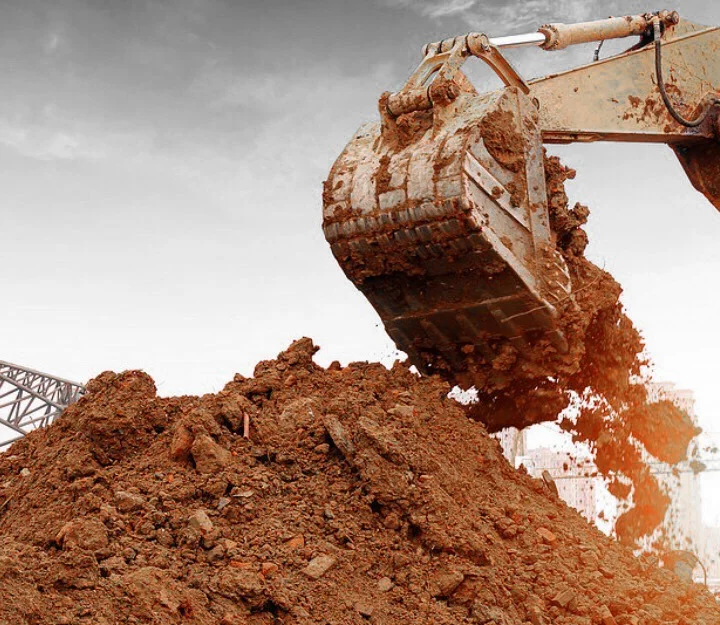Revealing the Art of Excavation: Pro Tips for Safe and Productive Excavating
As dirt is turned and planet is moved, the details of excavation expose themselves, requiring a keen understanding of devices, dirt make-up, safety procedures, and environmental considerations. The knowledge required to navigate these aspects properly can imply the distinction between a successful excavation task and a potential catastrophe.
Relevance of Appropriate Tools
To guarantee the security and effectiveness of any type of excavation job, using the proper tools is extremely important. Excavation jobs vary in extent and intricacy, ranging from tiny household landscaping jobs to massive construction undertakings.
Excavators are essential items of equipment in any kind of excavating procedure. These versatile makers been available in numerous sizes to fit different task requirements. Mini excavators are suitable for smaller tasks, while larger excavators tackle more extensive tasks successfully. Backhoes are one more crucial tools kind, integrating the functions of a loader and an excavator in one machine. They are beneficial for tasks calling for convenience and ability to move.
Bulldozers stand out in jobs that require pushing huge quantities of soil or particles. By investing in the ideal equipment, excavation jobs can be finished securely, on time, and with precision.
Recognizing Soil Make-up
A thorough understanding of dirt structure is fundamental for performing excavation jobs with precision and safety. Understanding the different types of soil is critical as it directly impacts excavation techniques, tools choice, and general task performance.
Sand particles are the largest and offer excellent drainage yet use little cohesion. Silt particles are smaller sized than sand yet bigger than clay, supplying moderate drainage and communication. Clay fragments are the smallest and provide high cohesion yet inadequate drainage. Raw material, such as decomposing plant material, influences dirt fertility and stability.
Prior to starting excavation, performing soil examinations to identify its make-up and characteristics is important. This details aids in picking the proper tools, applying security measures, and creating excavation techniques tailored to the particular soil conditions - lancaster excavation. By understanding soil structure, excavation specialists can improve task results while ensuring safety and security and adherence to ideal practices
Precaution and Methods
Recognizing soil composition is the keystone whereupon security steps and protocols for excavation projects are constructed, ensuring the health of employees and the success of the undertaking. When it involves safety and security during excavation, there are numerous essential steps that need to be executed to alleviate threats and protect against accidents.
Firstly, before any kind of digging begins, a complete evaluation of the website must be performed to identify any type of possible threats such as underground utilities, unsteady dirt conditions, or nearby structures that can position a danger. It is critical to have a competent person oversee the excavation procedure to ensure that all safety and security protocols are adhered to purely.
Furthermore, all workers included in the excavation needs to be correctly educated in risk-free excavating techniques and the appropriate operation of equipment. By adhering to find this these safety procedures and procedures, excavation jobs can be finished efficiently and without incident.
Reliable Excavation Preparation
When starting an excavation task, careful preparation is necessary to make sure efficiency, security, and effective outcomes. Effective excavation preparation entails numerous key steps that are vital for the smooth execution of the job. The primary step is to perform a complete site analysis to recognize any kind of prospective hazards, such as underground energies or unstable dirt conditions. This information is vital for developing an in-depth excavation plan that consists of security actions and risk reduction approaches.
As soon as the website assessment is complete, the following step is to produce a clear timeline and schedule for the excavation tasks. This consists of determining the series of tasks, devices demands, and manpower allowance. Correct scheduling aids avoid hold-ups and makes sure that the job remains on track.

Additionally, communication amongst all employee is critical during the planning stage. Clear go to the website regulations, routine updates, and reliable control are crucial for an effective excavation job. By spending time and initiative in meticulous preparation, excavation teams can dramatically enhance productivity, reduce threats, and achieve successful results.

Handling Environmental Factors To Consider
With increasing emphasis on ecological sustainability in building and construction methods, taking care of environmental considerations has actually become a crucial facet of excavation projects. Excavation tasks have the potential to impact the surrounding atmosphere with soil erosion, debris overflow, habitat interruption, and contamination of water sources. To mitigate these risks, it is vital to apply ideal methods that focus on environmental management.

In addition, correct waste management is critical to avoid dirt and water contamination. Applying treatments for the disposal of hazardous products, recycling of waste products, and minimizing making use of harmful chemicals can significantly minimize the ecological effect of excavation projects. By integrating these techniques right into excavation planning and implementation, building and construction companies can guarantee that their projects are not just safe and effective however also environmentally accountable.
Verdict
Finally, understanding the art of excavation needs a detailed understanding of appropriate equipment, dirt composition, precaution, and effective planning. By complying with these standards and taking into consideration environmental variables, excavations can be carried out safely and effectively. It is important to prioritize safety and performance in every digging task to ensure effective results.
As dirt is turned and earth is relocated, the details of excavation disclose themselves, requiring an eager understanding of tools, soil structure, Look At This security protocols, and environmental factors to consider.To make certain the safety and security and efficiency of any excavation job, using the appropriate equipment is vital.An extensive understanding of soil structure is fundamental for performing excavation jobs with accuracy and security. Comprehending the different types of soil is vital as it straight impacts excavation approaches, tools selection, and overall job performance. By recognizing dirt make-up, excavation specialists can improve project end results while guaranteeing security and adherence to best methods.